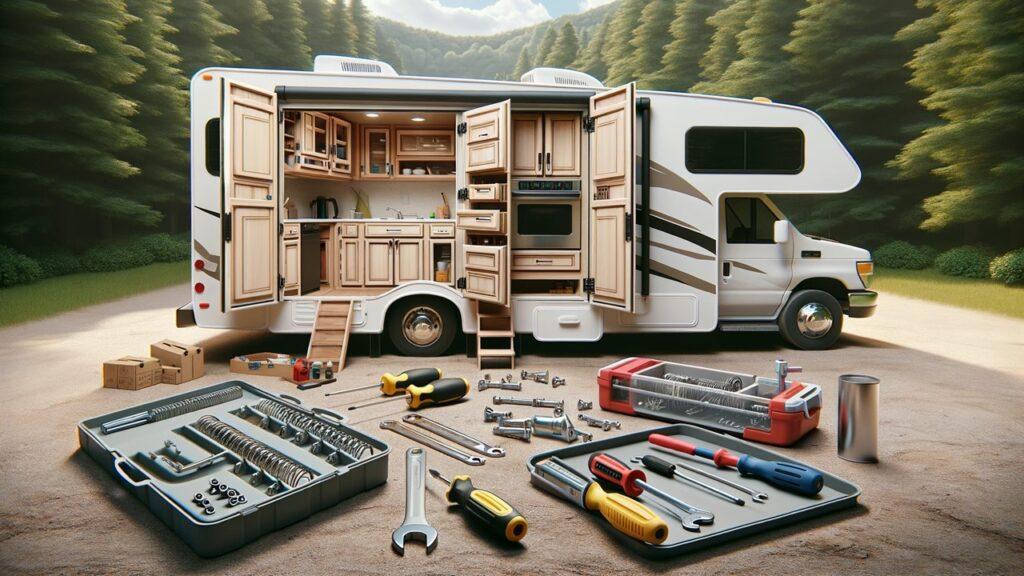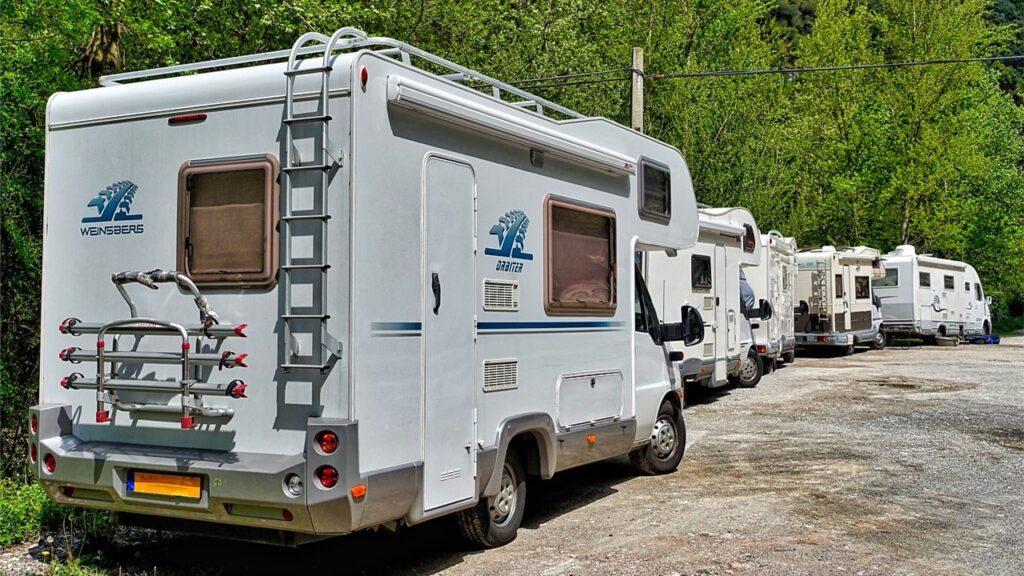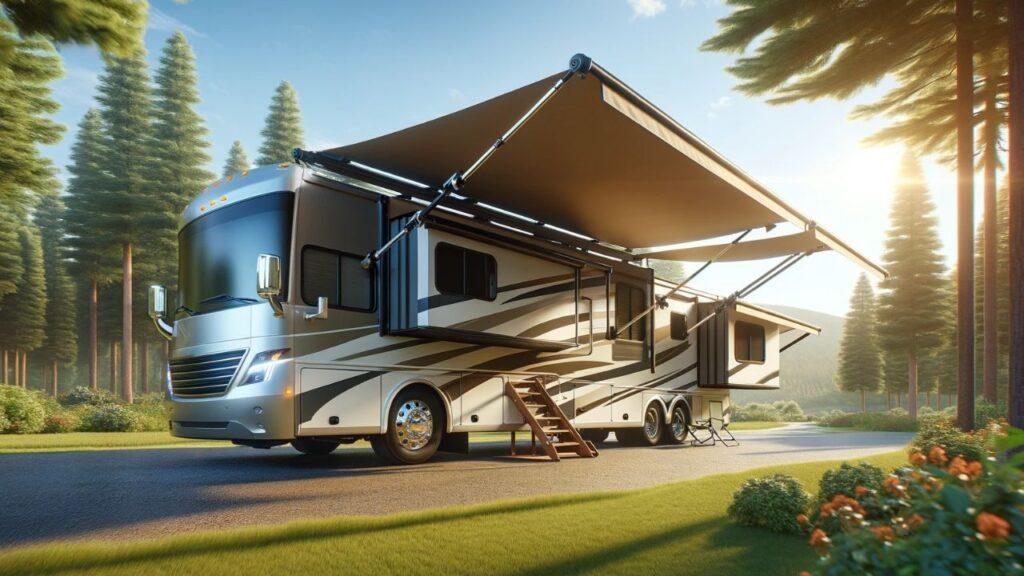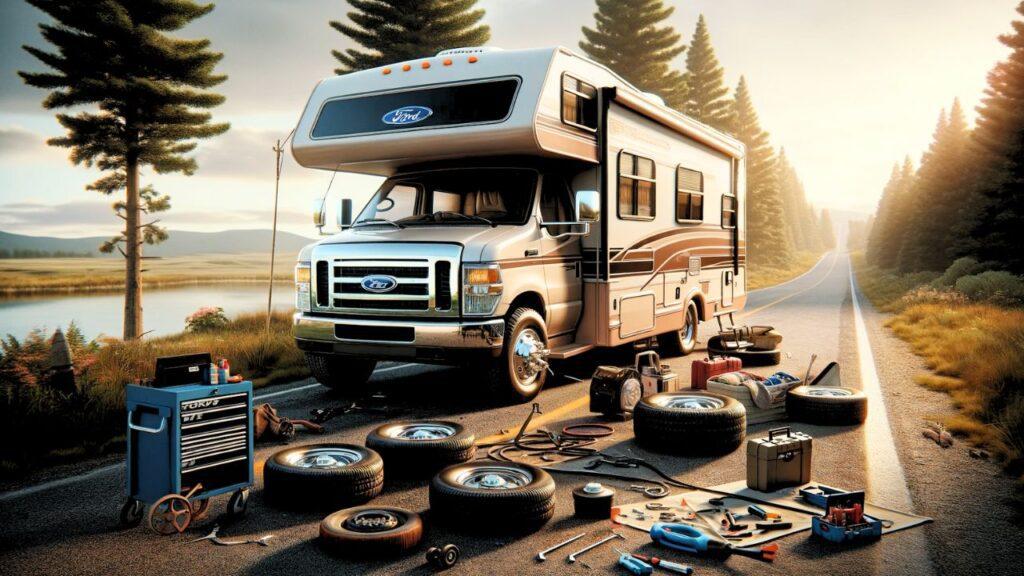
Owning an RV is an exciting adventure. It gives you the freedom to explore new places while enjoying the comforts of home. But to keep your RV in tip-top shape, you need to give it some TLC, especially when it comes to preventing rust. Rust can sneak up on you, causing significant damage and leading to expensive repairs. Let’s dive into some easy and effective ways to prevent rust on your RV, so you can keep it looking great and ready for your next journey.
What Causes Rust on Your RV?
Before we get into the prevention methods, it’s important to understand what causes rust on your RV. Rust forms when metal is exposed to moisture and oxygen, leading to a process called oxidation. This reaction deteriorates the metal, causing it to weaken and corrode. RVs are particularly prone to rust because they’re often exposed to rain, snow, salt, and humidity. By knowing the enemy, you can better arm yourself against it.
Regular Cleaning and Maintenance
Regular cleaning and maintenance are your first lines of defense against rust. Dirt, grime, and road salt can stick to the surface of your RV, creating an ideal environment for rust to form. Keeping your RV clean not only makes it look good but also protects it from damage.
- Wash Frequently: Regularly wash your RV with mild soap and water to remove dirt, salt, and other contaminants. Pay special attention to the undercarriage, as this area is most vulnerable to rust. Using a pressure washer can help you get to those hard-to-reach spots.
- Dry Thoroughly: After washing, make sure your RV is thoroughly dried. Moisture left on the surface can lead to rust. Use a clean, dry cloth or towel to wipe down all surfaces. You might also consider using a blower to get rid of water in tricky areas.
- Waxing: Applying a coat of wax to your RV’s exterior acts as a protective barrier, preventing moisture from reaching the metal surface. Regular waxing, at least twice a year, can significantly reduce the risk of rust.
Keeping up with regular cleaning and maintenance is a simple yet effective way to prevent rust. Not only does this routine care help avoid corrosion, but it also keeps your RV looking fresh and well-maintained.
Inspect and Repair Damages Promptly
Keeping an eye out for potential rust spots is crucial. Small rust spots can quickly become major problems if not addressed promptly. Regular inspections allow you to catch and fix issues early.
- Sanding and Painting: Use sandpaper to remove rust and smooth the affected area. Apply a rust-inhibiting primer followed by a matching paint color to protect the metal. This will stop existing rust and prevent new rust from forming.
- Sealants and Coatings: Use high-quality sealants and coatings to protect metal surfaces. These products create a barrier that prevents moisture from reaching the metal, reducing the likelihood of rust. Make sure to follow the manufacturer’s instructions for the best results.
By inspecting and repairing damages promptly, you can save yourself from costly repairs down the road. Addressing rust issues early ensures your RV remains in top condition for your adventures.
Protective Coverings
Investing in protective coverings can go a long way in preventing rust on your RV. These coverings shield your vehicle from environmental elements, reducing exposure to moisture and other rust-causing factors.
- RV Covers: Use a high-quality RV cover made from breathable material. These covers protect against rain, snow, and UV rays while allowing moisture to escape, preventing mold and mildew. Ensure the cover fits well to avoid trapping moisture.
- Undercarriage Coatings: Apply a protective undercarriage coating to shield the underside of your RV from road salt, gravel, and moisture. This extra layer of protection can significantly extend the life of your RV’s undercarriage.
Using protective coverings is a straightforward and effective way to shield your RV from the elements. These investments can significantly reduce the risk of rust and prolong the life of your vehicle.
Proper Storage Practices
How you store your RV when it’s not in use plays a crucial role in preventing rust. Proper storage practices can help minimize exposure to moisture and other rust-inducing elements.
- Indoor Storage: If possible, store your RV indoors, such as in a garage or storage facility. This provides the best protection against the elements and significantly reduces the risk of rust. If indoor storage isn’t an option, consider using an RV carport.
- Elevate Your RV: If indoor storage is not an option, consider using blocks or jacks to elevate your RV slightly off the ground. This helps prevent moisture from seeping into the undercarriage. Ensure the blocks or jacks are stable to avoid any accidents.
- Ventilation: Ensure proper ventilation inside your RV to prevent condensation buildup. Use vent covers or slightly open windows to allow air circulation, reducing moisture levels. Good ventilation prevents mold and rust from developing inside the RV.
Proper storage practices are essential for long-term rust prevention. By storing your RV correctly, you can protect it from harmful elements and maintain its condition for years to come.
Regular Use and Movement
Believe it or not, regular use of your RV can help prevent rust. When an RV sits idle for extended periods, moisture can accumulate in various areas, leading to rust formation. Keeping your RV in motion allows for better air circulation and reduces the risk of rust.
- Drive Regularly: Regularly driving and using your RV allows for air circulation and helps prevent moisture buildup. Even short trips can make a difference. Moving your RV ensures that all parts, including the tires and mechanical systems, remain in good condition.
- Exercise Mechanical Parts: Ensure that mechanical parts, such as brakes and gears, are used and maintained regularly. This prevents them from seizing up and reduces the risk of rust.
By keeping your RV in regular use, you ensure that it stays in good condition and reduces the risk of rust and other issues caused by inactivity. Regular movement keeps your RV ready for your next adventure.
Anti-Rust Products
There are various anti-rust products available that can provide additional protection for your RV. These products are designed to inhibit rust formation and can be applied to vulnerable areas. Using these products adds an extra layer of defense against rust.
- Rust Inhibitors: Spray-on rust inhibitors create a protective layer on metal surfaces, preventing rust from forming. These are especially useful for hard-to-reach areas and the undercarriage. Regularly applying rust inhibitors can make a significant difference in rust prevention.
- Rust Converters: If you already have some rust spots, use a rust converter. This product chemically transforms rust into a stable compound that can be painted over, preventing further corrosion. Rust converters are a great solution for treating existing rust and preventing it from spreading.
Incorporating anti-rust products into your maintenance routine adds an extra layer of protection to your RV. These products are effective in preventing rust and maintaining the overall health of your vehicle.
Mind the Seams and Joints
Seams, joints, and welds on your RV are particularly susceptible to rust due to their design. These areas often trap moisture, leading to corrosion. Proper care and maintenance of seams and joints are crucial for rust prevention.
- Seal Seams and Joints: Regularly inspect and reseal seams and joints with a high-quality RV sealant. This prevents water from seeping into the crevices and causing rust. Check for any cracks or gaps that might allow moisture to enter.
- Use Rust-Resistant Hardware: When replacing or repairing parts, opt for rust-resistant hardware such as stainless steel or galvanized metal. This reduces the risk of rust formation in the future. Rust-resistant hardware is particularly important in areas exposed to moisture.
By taking special care of seams and joints, you can prevent rust from forming in these vulnerable areas. Proper sealing and the use of rust-resistant materials ensure the longevity of your RV.
Check and Maintain Roof and Gutters
Your RV’s roof and gutters play a critical role in preventing rust by directing water away from the vehicle. Ensuring these areas are in good condition is vital for overall rust prevention. Proper roof and gutter maintenance helps keep your RV dry and rust-free.
- Cleaning Gutters: Regularly clean out any debris from your RV’s gutters to ensure proper water drainage. Clogged gutters can lead to water overflow, which may seep into seams and joints. Use a small brush or a hose to remove debris.
- Roof Inspections: Inspect your RV’s roof for any signs of damage or wear. Repair any cracks or holes promptly to prevent water from penetrating and causing rust. Regular roof inspections and maintenance prevent leaks and rust issues.
Maintaining your RV’s roof and gutters is essential for preventing water damage and rust. Proper care ensures that water is directed away from the RV, keeping it dry and in good condition.
Wrapping It Up!
By following these easy ways of preventing rust on your RV, you can keep your vehicle in top condition and extend its lifespan. Regular maintenance, proper storage, and the use of protective products are key to avoiding the costly and damaging effects of rust. With these tips, you’ll be ready to hit the road with confidence, knowing your RV is well-protected from corrosion.
FAQs
How often should I wash my RV to prevent rust?
Washing your RV every few weeks, especially after exposure to road salt, rain, or snow, helps remove contaminants that can cause rust. Regular washing is essential for rust prevention and overall maintenance.
Can I use household rust removers on my RV?
It’s best to use products specifically designed for RVs, as household rust removers may be too harsh and could damage the RV’s paint or surfaces. RV-specific products are formulated to be effective without causing harm.
Is it necessary to wax my RV if it’s stored indoors?
Even if stored indoors, waxing provides an additional protective layer against moisture and other contaminants, so it’s still recommended. Waxing helps maintain your RV’s finish and protects against moisture-related issues.
What is the right material for an RV cover?
Breathable materials that allow moisture to escape while protecting against UV rays, rain, and snow are ideal for RV covers. Look for covers specifically designed for RVs to ensure the best fit and protection.
How do I know if my RV has a rust problem?
Look for signs such as bubbling paint, discoloration, flaking metal, or a rough texture on the surface. Regular inspections can help you catch rust early. If you notice any of these signs, address them promptly to prevent further damage.
Can I apply undercarriage coatings myself?
Yes, many undercarriage coatings are available in spray cans and can be applied by DIY enthusiasts. However, professional application ensures thorough coverage and optimal protection.
As outdoor enthusiasts ourselves, we understand the significance of reliable gear that can withstand the elements and support you throughout your journey. We try to provide as much real life information with our guides and how tos to the readers as possible. Our honest and transparent reviews of essential outdoor gadgets and products are rooted in testing and experience. We take great satisfaction in offering unbiased evaluations, ensuring that you can make informed decisions when investing in outdoor gear. As an affiliate website, we may earn a small commission from some of the products we feature. However, rest assured that our opinions are not influenced by this, and your trust is always our top priority.



